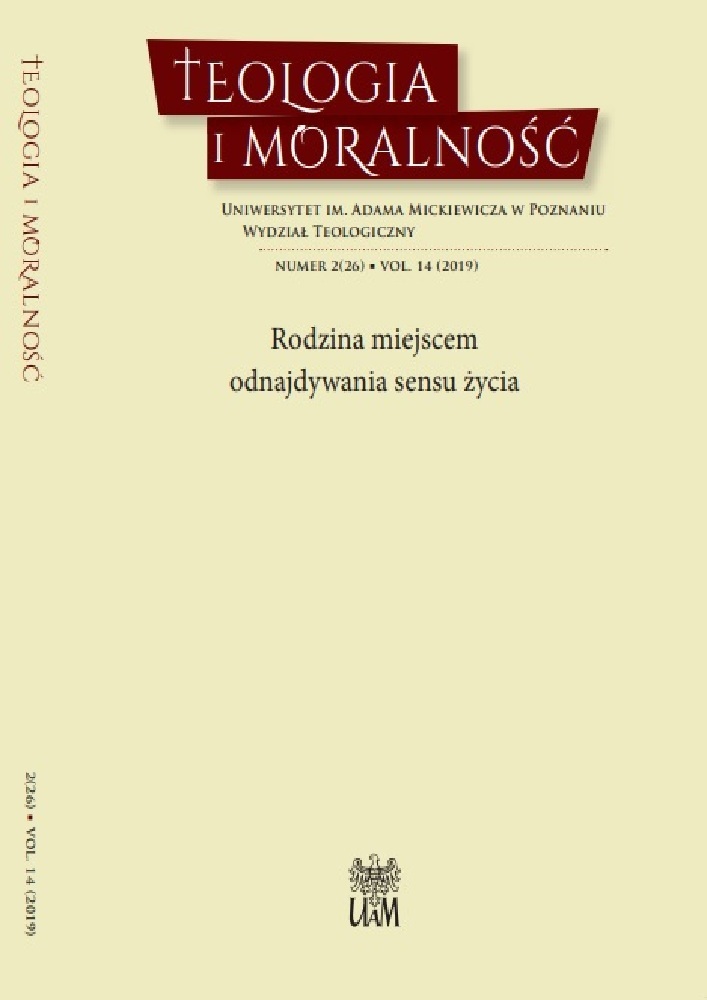Abstrakt
Artykuł ten adresowany jest do osób zaangażowanych w pracę kliniczną albo duszpasterską z jednostkami doświadczającymi kryzysu. Autorka analizuje zastaną literaturę dotyczącą wykorzystania duchowości w diagnozie i interwencjach po to, by przedstawić proste narzędzia pozwalające na uwzględnienie duchowości w pracy z osobami w kryzysie. Przedstawia przegląd aspektów duchowości i religijności, które mogą być wykorzystane w radzeniu sobie ze stresem i sytuacjami kryzysowymi. Podaje także przykłady sposobów włączenia praktyk duchowych do relacji między zawodowym pomagaczem a klientem. Oprócz korzyści, wskazuje także na trudności w uwzględnianiu duchowości w pracy klinicznej oraz ryzyko związane z tym procesem.
Bibliografia
Anandarajah G., Hight E. (2001), Spirituality and medical practice, “American Family Physician”, 63 (1), p. 87.
Copans S., Olitzky K., Grunberg M. (2009), The Twelve Jewish Steps to Recovery. (Second Edition) www.Abebooks.com.
Dunn K.S., Horgas A.L. (2004), Religious and nonreligious coping in older adults experiencing chronic pain, “Pain Management Nursing” 5(1), p. 19-28.
Ellis A. (2000), Can Rational Emotive Behavior Therapy (REBT) be eff ectively used with people who have devout beliefs in God and religion?, “Professional Psychology: Research and Practice”, 31 (1), p. 29-32.
FICA Spiritual History Tool. The George Washington Institute for Spirituality and Health, https://smhs.gwu.edu/gwish/clinical/fi ca/spiritual-history-tool
Henderson L. (2010), Religious coping and subjective well-being: African Americans’ experiences of surviving hurricane Katrina, “Dissertation Abstracts International” 70(10B), p. 6552.
Hodge D., Salas-Wright C., Wolosin R. (2016), Addressing spiritual needs and overall satisfaction with service provision among older hospitalized inpatients, “Journal of Applied Gerontology” 35 (4), p. 374-400.
James R. (2008), Crisis Intervention Strategies, (6th ed.) Belmont [USA, California].
Koenig H., Pritchett J. (1998), Religion and Psychotherapy, in: Handbook of religion and mental health, Ed. H.G. Koenig, Academic Press, p. 323-336.
Mohr S., Gillieron C., Borras L. (2007), The assessment of spirituality and religiousness in schizophrenia, “Journal of Nervous and Mental Disease” 195(3), p. 247-253.
Nairn R.C., Merluzzi T.V. (2003), The role of religious coping in adjustment to cancer, “Psycho-Oncology” 12 (5), p. 428-441.
Pargament K. (2001), The psychology of religion and coping, New York.
Pargament K.I., Koenig H.G., Perez L.M. (2000), The many methods of religious coping: Development and initial validation of the RCOPE, “Journal of Clinical Psychology” 56 (4), p. 519-544.
Sagaser K., Hashmi S., Carter R., Lemons J., Mendez-Figueroa H., Nassef S., Peery B., Singletary C. (2016), Spiritual exploration in the prenatal genetic counseling session, “Journal of Genetic Counseling” 25, p. 923-935.
Saguil A., Phelps K. (2012), The Spiritual Assessment. Downloaded from the “American Family
Physician”, www.aafp.org/aft May 1, 2017.
Selye H. (1950), Stress, Montreal.
Selye H. (1956), The stress of life, New York–London.
Selye H. (1978), The stress of life, revised edition, New York.
Stobe M. (2004), Religion in coping with bereavement: Confi dence of convictions or scientifi c scrutiny?, “International Journal for the Psychology of Religion” 14(1), p. 14-23.
Sussman S., Milam J., Arpawong T., Tsai J., Black D., Wills T.A., (2013), Spirituality in addictions treatment: Wisdom to know… what it is, “Substance Use & Misuse” 48 (12), p. 1203-1217.
Talik W. (2013), The Adolescents Religious Coping Questionnaire. Translation and Cultural Adaptation of Pargament’s RCOPE Scale for Polish Adolescents, “Journal of Religion and Health” 52, p. 143-158.
Licencja

Utwór dostępny jest na licencji Creative Commons Uznanie autorstwa – Bez utworów zależnych 4.0 Międzynarodowe.
